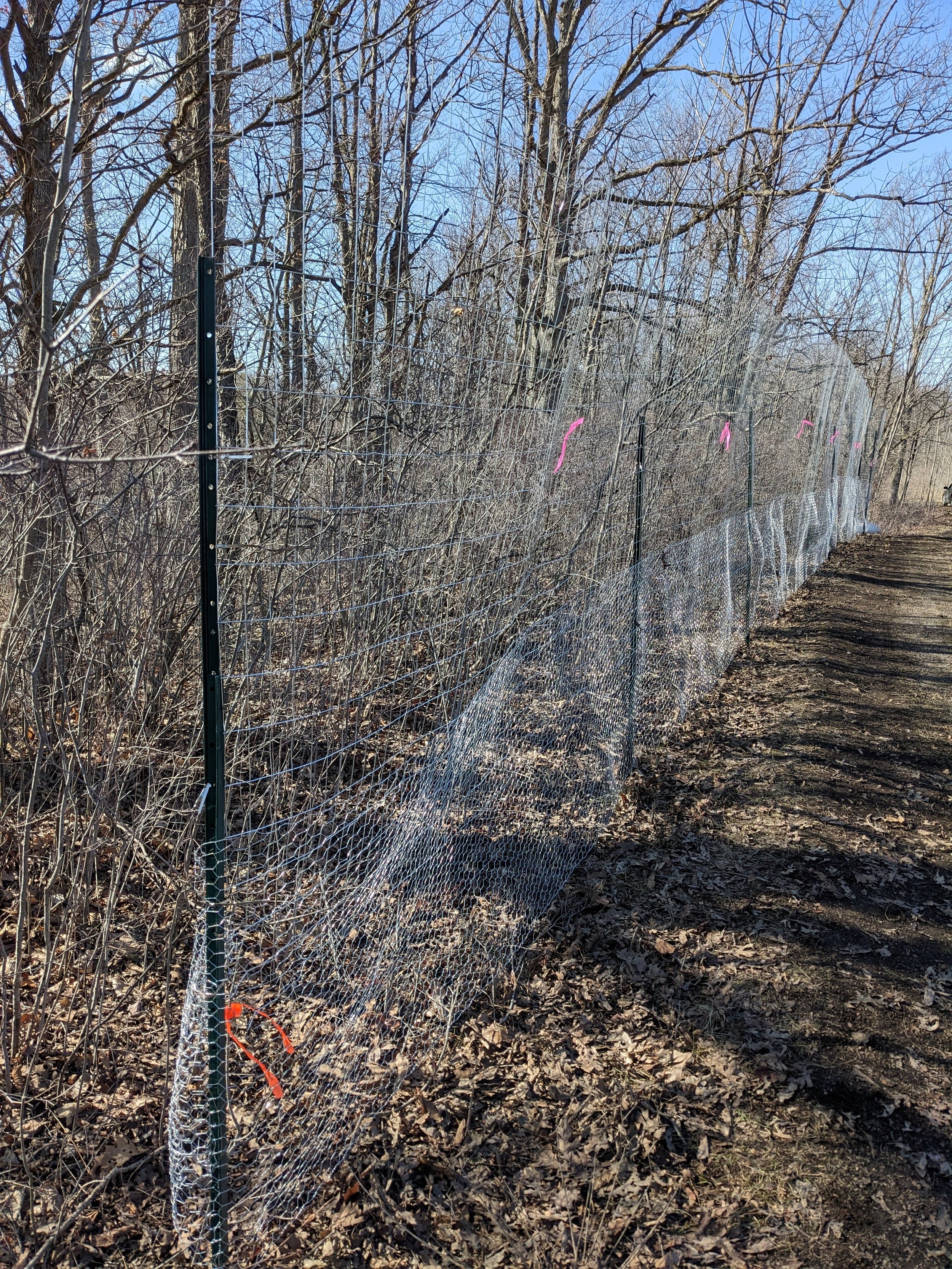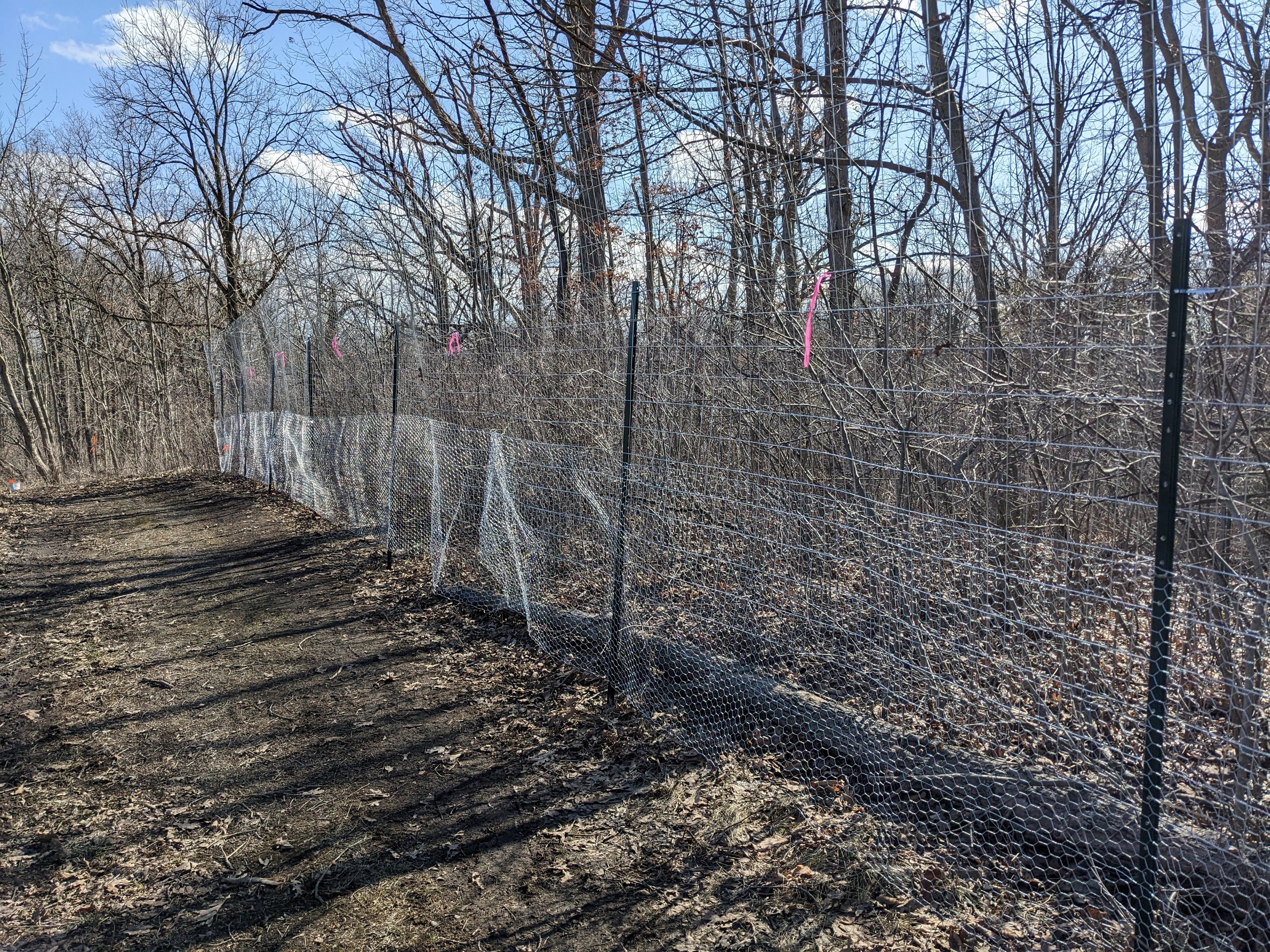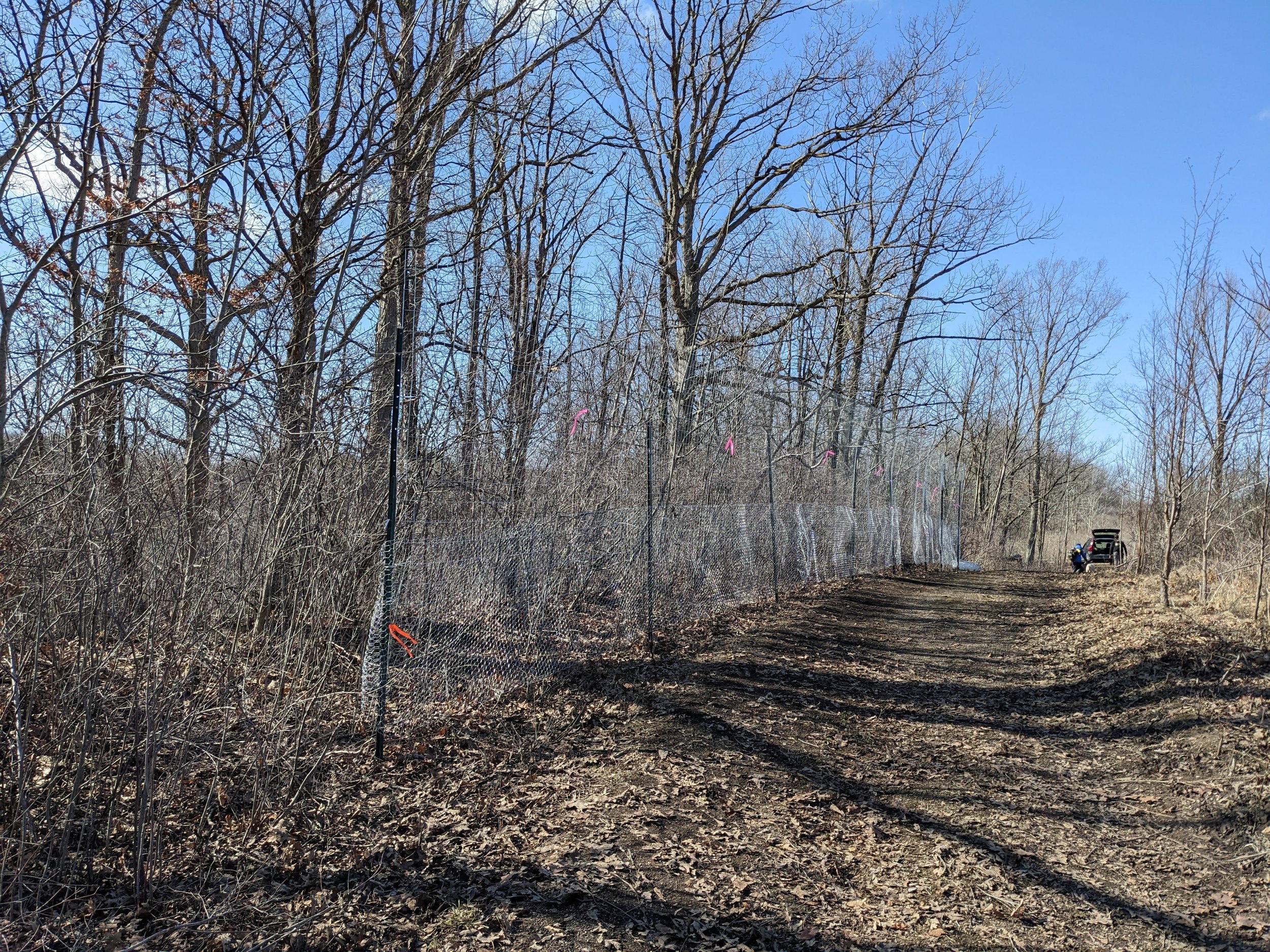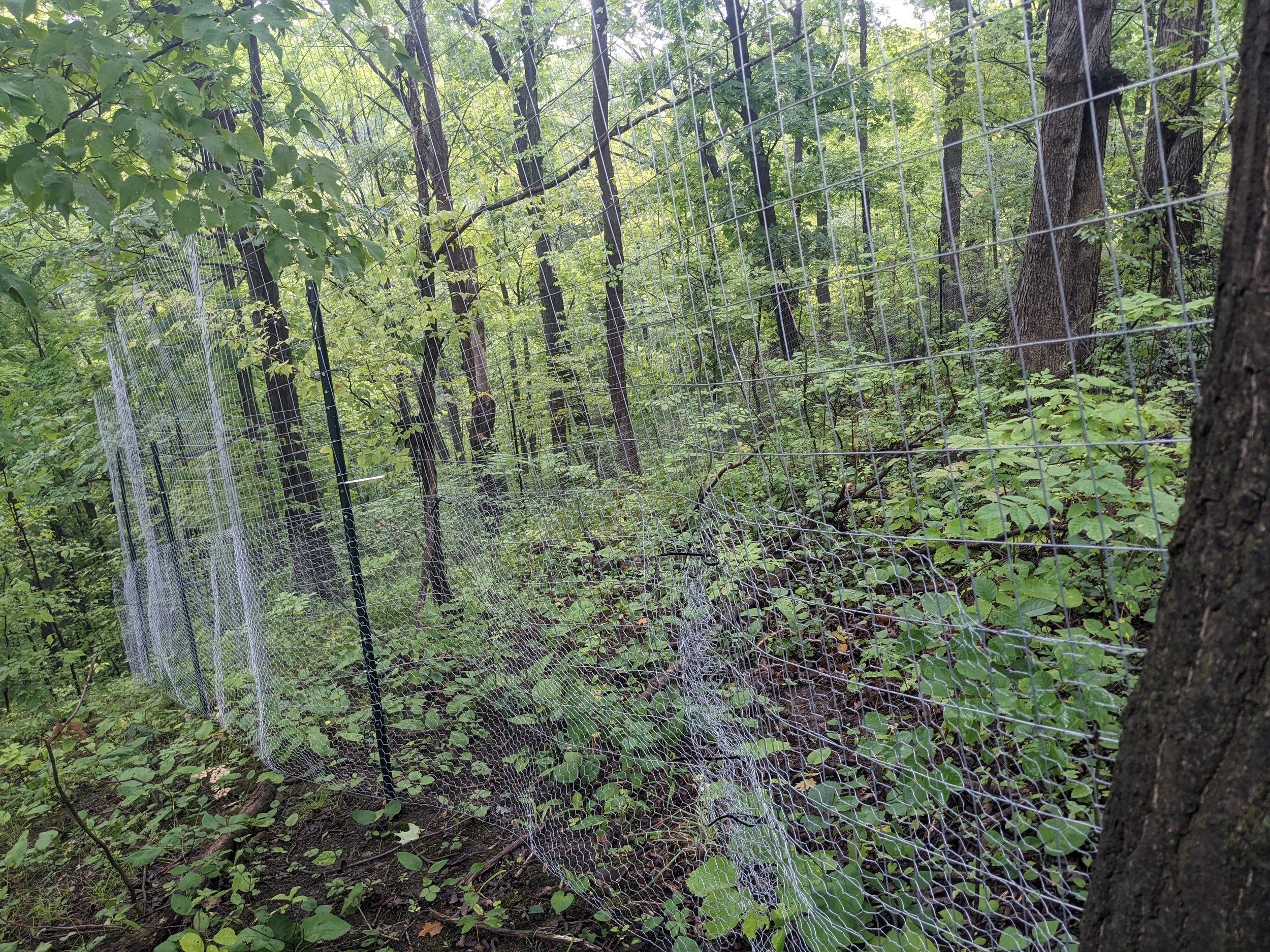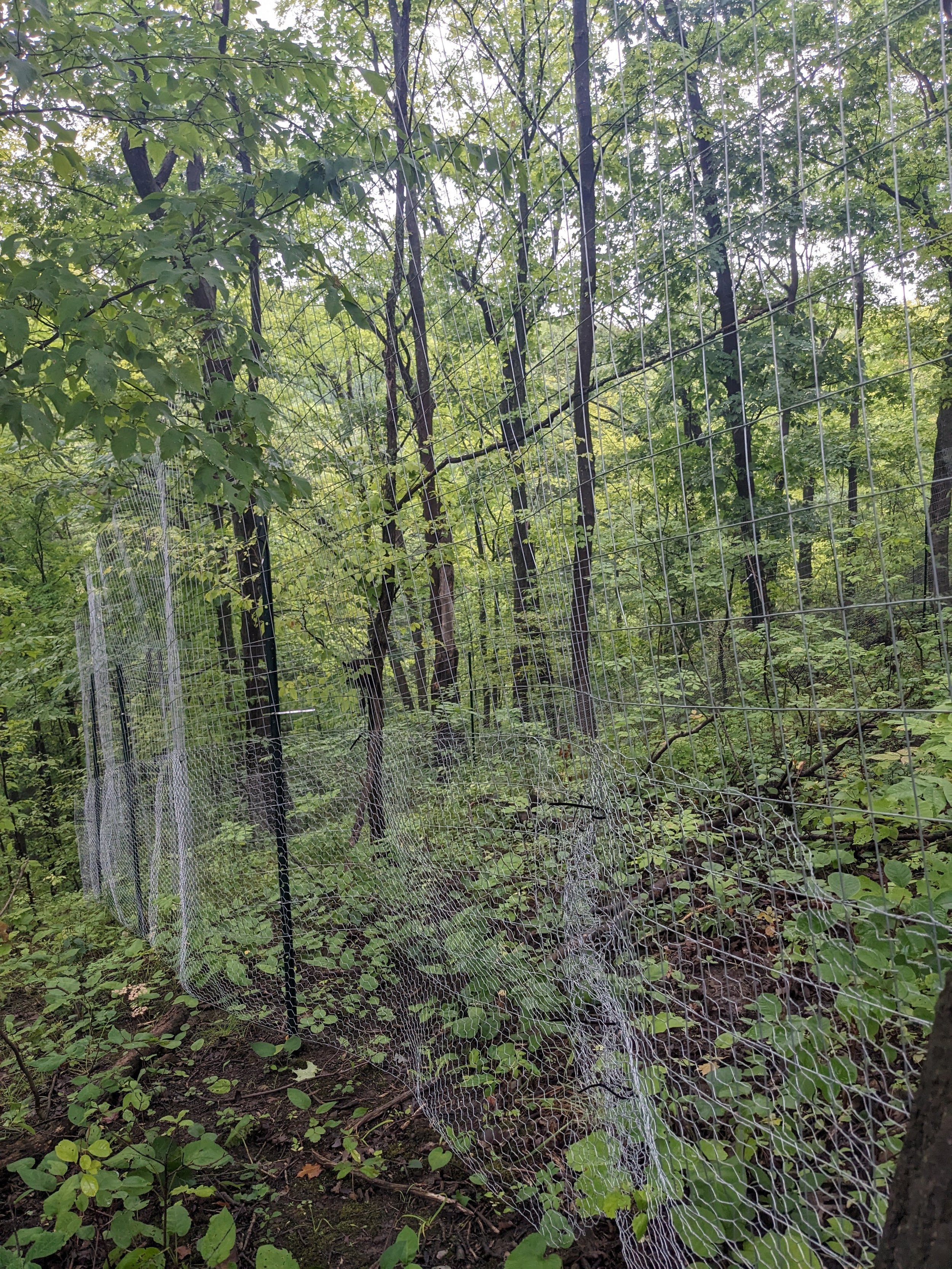Deer Exclusion Fencing at Sheelah Dunn Dooley Nature Sanctuary
The Hamilton Naturalists’ Club
By Brittany Killingbeck, Stewardship Technician
5 September, 2023
It is no secret that southern Ontario has an overabundance of White-tailed deer (Odocoileus virginianus). Colonization, land use changes, and urbanization have significantly reduced or eliminated predators from the region, which, combined with favourable habitat changes and milder winters, has allowed deer populations to drastically increase. While many people fawn over these marvelous hooved animals, too many deer browsing on the landscape can cause immense damage to our forests.
Through the Cootes to Escarpment EcoPark System Ecological Corridors Pilot Program the Hamilton Naturalists’ Club (HNC) has installed monitoring plots with deer exclusion fencing at our Sheelah Dunn Dooley Nature Sanctuary (SDDNS) in Burlington, ON to help us understand the impact of deer on our nature sanctuary, observe what will grow in the absence of deer browse, and help inform our management strategies.
Background
A large portion of the property was farmed for many decades before it was left fallow in the early 2000s, transitioning to a dogwood thicket with open patches of meadow and grassland. The edges and slopes of the ravine were left untouched throughout this time and have retained their forested features. However, as you gaze across the ravine edge you will notice a lack of small- and medium-sized trees. During our initial plant surveys, we noted a healthy canopy of oaks, maples, and hickories. Yet there is a notable absence of these species in the understory and sub-canopy layers, and only a handful of understory species like American Witch-Hazel (Hamamelis virginiana). Additionally, the ground layer is primarily composed of herbaceous species like Large-leaved Aster (Eurybia macrophylla) and Blue-stemmed Goldenrod (Solidago caesia). In these already disturbed forest ecosystems, the deer are browsing so intensely that there is little to no forest understory or regeneration.
Monitoring Plots
In late March and early April staff and volunteers installed three sets of 20m x 20m paired monitoring plots along the forested ravine edge. The control plots are open areas with marked T-bars in each corner, adjacent to their corresponding fenced plot where deer-exclusion fencing has been installed.
Installation of the fencing on and along the slope was a difficult task and we cannot thank our volunteers enough for their assistance. After squaring the corners of the fenced plots we drove 7ft T-bars into the ground every 10ft with a post pounder. Rolls of 6ft x 100 ft galvanized welded fencing with a 2in x 4in gauge were cut into smaller sections and secured to the T-bars approximately 2ft above the ground with stainless steel cable ties, for a total fence height of 8m. Chicken wire was added along the bottom to cover the space where deer could crawl under. A 6-inch gap was left along the bottom to allow smaller animals such as rabbits, chipmucks, mice, snakes, toads, and salamanders free access to the area. While rodents do pose their own risks to the plants - hungry herbivores that snip down seedlings and girdle saplings with their bark stripping in the winter – we felt that their damage would be negligible in comparison to the deer and that it was more important to leave the area open for movement.
Through reviews of the site and conversations with other ecologists we believe there are more species present than currently observed. By excluding the deer and managing invasive species within the plots we hope those plants will grow and flourish. Both HNC staff and botanists from Royal Botanical Gardens (RBG) have conducted plant surveys in the monitoring plots this season and the data recorded will serve as a baseline for future surveys.



